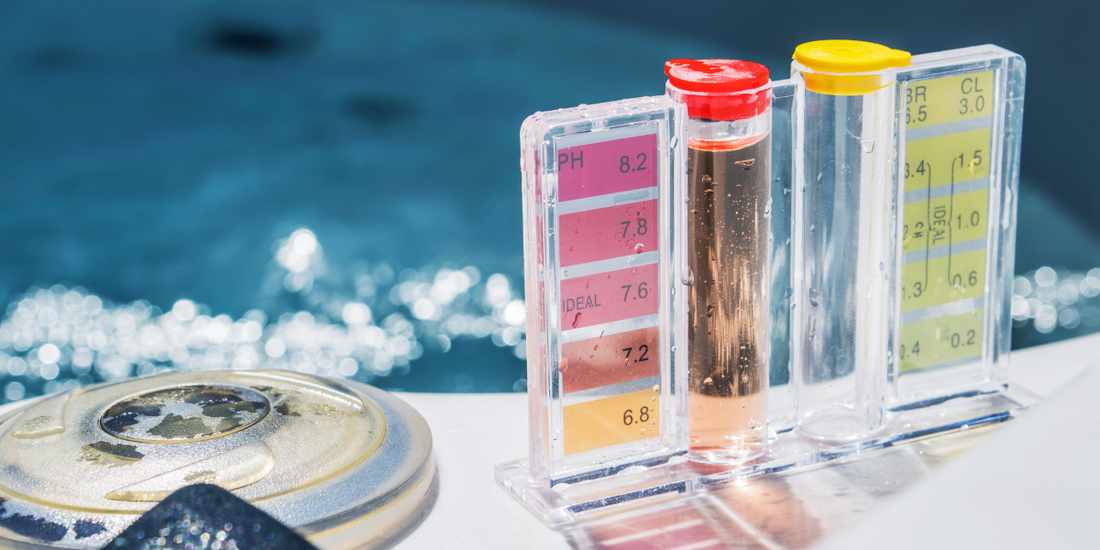As a dedicated pool management company committed to providing exceptional service, ensuring the proper chemical balance in your saltwater pool is paramount. Among the critical parameters to monitor and maintain is the pH level. In this comprehensive guide, we'll explore the importance of pH in saltwater pools, the factors influencing pH levels, and effective strategies for managing and maintaining optimal pH levels for a pristine swimming experience.
Understanding pH in Saltwater Pools:
pH is a measure of the acidity or alkalinity of water on a scale from 0 to 14, with 7 being neutral. In saltwater pools, maintaining the pH within the recommended range is crucial for several reasons:
- Swimmer Comfort: Proper pH levels ensure a comfortable swimming environment by preventing skin and eye irritation commonly associated with imbalanced pH.
- Equipment Protection: Balanced pH helps protect pool equipment, such as pumps, filters, and salt chlorinators, from corrosion or scaling, thereby extending their lifespan.
- Water Clarity: pH affects the effectiveness of sanitizers, such as chlorine generated by salt chlorinators. Maintaining the correct pH range optimizes sanitizer efficacy, resulting in crystal-clear water.
Factors Influencing pH Levels:
Several factors can influence pH levels in saltwater pools:
- Salt Chlorinator Output: The output of salt chlorinators can affect pH levels. Excessive chlorine production may elevate pH, while insufficient production can result in pH decrease.
- Carbonate Alkalinity: High levels of carbonate alkalinity, often present in source water or introduced through chemical additions, can buffer pH, making it more resistant to change.
- Environmental Factors: External factors like rainfall, debris, organic matter, and bather waste can introduce contaminants that affect pH levels.
Importance of Regular Testing:
Regular testing of pH levels is essential for maintaining water balance in saltwater pools. Testing should be performed at least weekly, with additional tests during periods of heavy use or environmental changes. Reliable test kits specifically designed for saltwater pools should be used for accurate results.
Managing pH Levels in Saltwater Pools:
Maintaining optimal pH levels in saltwater pools requires a systematic approach and proactive maintenance strategies:
- Adjusting Salt Chlorinator Output: Monitor and adjust the output of salt chlorinators to regulate chlorine production and prevent pH fluctuations. Consult the manufacturer's guidelines for proper adjustment procedures.
- Acid Dosing: Acid dosing is commonly used to lower pH levels in saltwater pools. Muriatic acid or sodium bisulfate can be added directly to the pool water to decrease pH. However, caution must be exercised to avoid overcorrection or damage to pool surfaces and equipment.
- Balancing Alkalinity: Carbonate alkalinity plays a significant role in stabilizing pH levels. If alkalinity levels are too high or low, use alkalinity increasers or reducers to bring them within the recommended range (typically 80-120 ppm).
- Regular Maintenance: Implement proactive measures to prevent pH fluctuations, such as maintaining proper water circulation, skimming to remove debris, and minimizing the introduction of contaminants into the pool.
Maintaining optimal pH levels is essential for the health, safety, and enjoyment of swimmers in saltwater pools. By understanding the factors influencing pH levels and implementing proactive management strategies, pool management companies can ensure their customers enjoy a pristine and inviting swimming environment year-round. With regular testing, proper adjustments, and diligent maintenance, managing pH levels in saltwater pools becomes a manageable task, ensuring a refreshing and relaxing experience for all.

